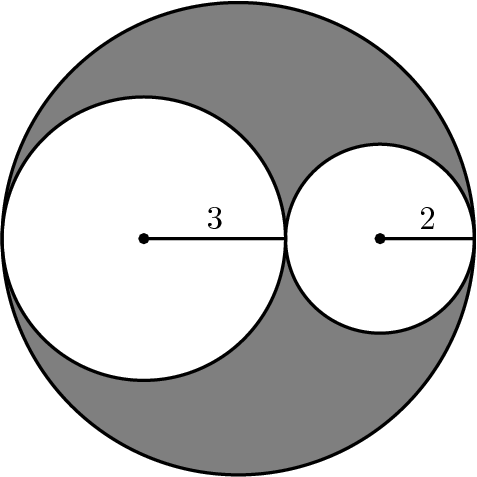Subtract Out The Hole
Geometry
Level
1

Circles of radii 2 and 3 are externally tangent and are circumscribed by a third circle, as shown in the figure. Find the area of the shaded region.
This section requires Javascript.
You are seeing this because something didn't load right. We suggest you, (a) try
refreshing the page, (b) enabling javascript if it is disabled on your browser and,
finally, (c)
loading the
non-javascript version of this page
. We're sorry about the hassle.
Radius of the biggest circle = 2 A B = 2 3 + 3 + 2 + 2 = 5
Hence shaded area= Area of biggest circle - (Area of two smaller circles)
= π ( 5 ) 2 − ( π ( 3 ) 2 + π ( 2 ) 2 ) = 1 2 π